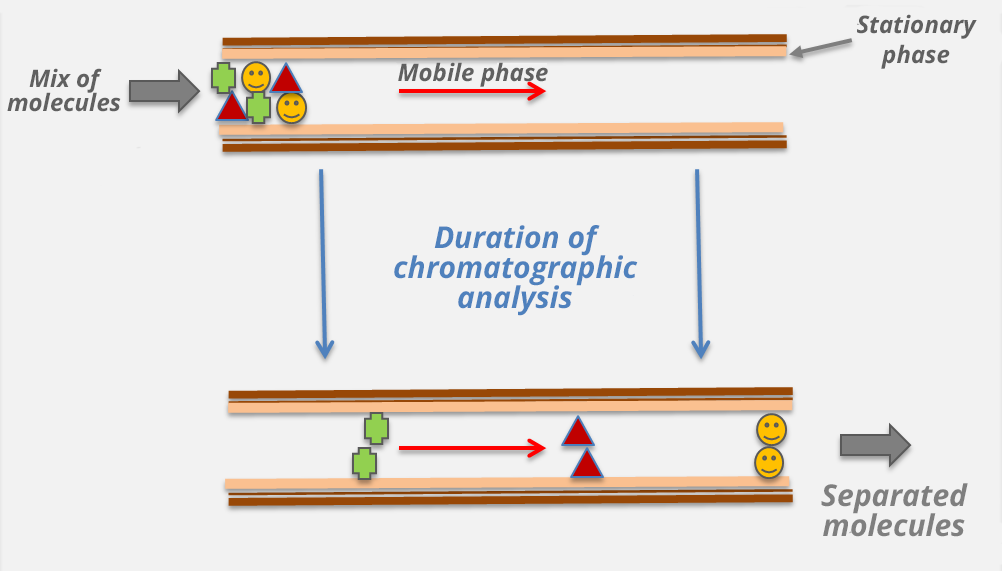Contaminant analysis in complex matrices
Analysis
The extract (even purified) contains molecules of the investigated contaminant but also other molecules co-extracted from the sample. Therefore, the contaminant analysis involves the separation of various molecules by column chromatography (see the figure).
The choice of the chromatographic technique depends on the nature of the contaminant to be analyzed and its properties (volatility, hydrophobicity) (see Choice of chromatographic technique).



Your Investigation
Which chromatographic technique do you suggest to analyze ochratoxin A in a purified extract of green coffee?
Clue
The molecule is relatively large, with polar groups (such as the carboxylic acid function). HPLC suits this analysis better than GC. A UV or fluorescence detector might work (cf. presence of unsaturation in the molecule due to the aromatic rings), as well as mass spectrometry.






